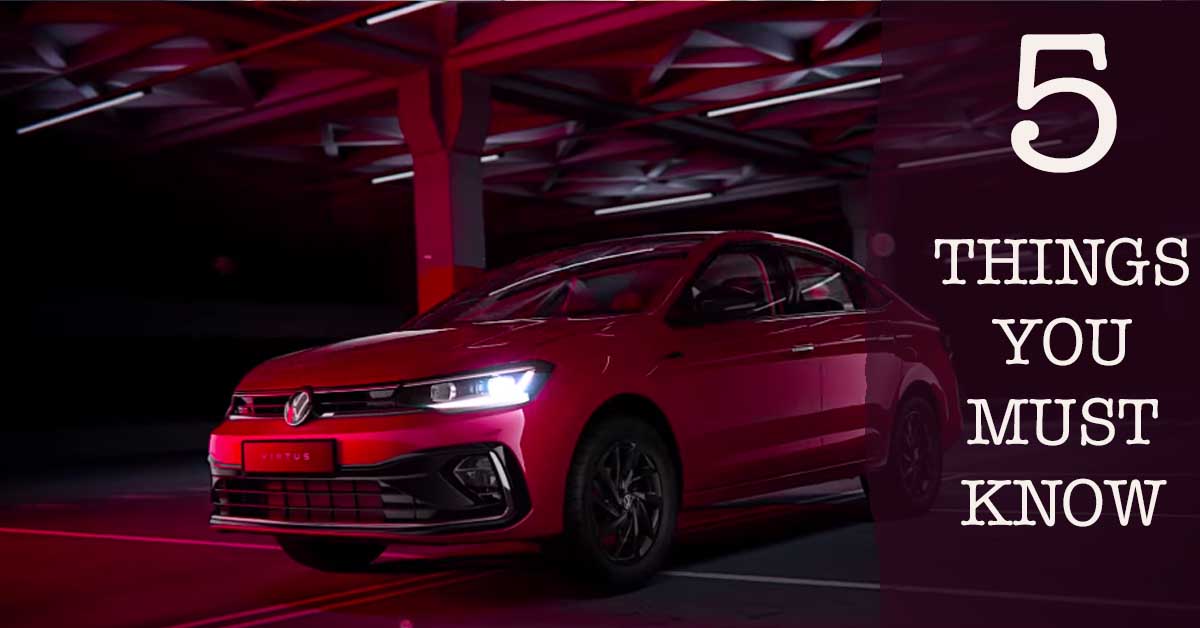Honda City-rivalling Volkswagen Virtus (Vento replacement) is based on MQB-AO-IN platform that underpins the recently launched Slavia,
Back in 2018, Skoda India made a big announcement of taking over the development of future cars for the local market by the Volkswagen Group. In line with this, the Czech automaker introduced the Kushaq last year as the first model to be based on the MQB-AO-In platform that even underpins the Taigun as well as the Slavia. Just like the Kushaq was followed by the VW-badged sibling, the Slavia will be today joined by a new sedan called the Virtus. As you would have guessed it, the Volkswagen Virtus is the much-awaited Vento-replacement that will go on to take on the likes of Honda City. Here are 5 important things you should know about the new Volkswagen sedan for our market.
You may also read: Does New VW Polo Lack ‘German Build Quality’ of Pre-facelift Models?
You may also read: VW Taigun Available to Ford Owners With Special Discounts
1. A Size Bigger Than Vento
Upon its India launch, this VW sedan will come as a complete model replacement for the Vento.The latter is underpinned by the PQ24 platform while the Virtus will boast the new MQB-A0-IN architecture. As we said, this is the same platform that also underpins the Slavia and the two new sedans will share aplenty. This will even make the Virtus significantly larger than the Vento. It’s noteworthy that the Virtus will be a direct rival to the Honda City, a car that excels when it comes to offering segment-leading cabin space. But it looks like the Virtus will be a good match to the Japanese adversary. In all likelihood, the Virtus will mimic the Slavia when it comes to the dimensions and here’s what it would look like when compared to the City in this aspect.
| Dimensions (mm) | Volkswagen Virtus | Honda City |
| Length | 4541 | 4549 |
| Width | 1752 | 1748 |
| Height | 1487 | 1489 |
| Wheelbase | 2651 | 2600 |
Clearly, the latest Honda City is longer than the Vento-replacement but what’s important to note here is that the Virtus will enjoy a 51 mm advantage when it comes to the wheelbase. What this would mean is that the cabin space would remain uncompromised in spite of the shorter overhangs. Another noteworthy aspect here is that the new sedan would be slightly wider than the segment-leader while being only marginally shorter.
2. Will be Fresher than Global Model
The India-bound VW Virtus won’t look exactly like the one sold abroad, at least for a while. This is because the car that would make its debut today will also become the facelift for the version sold abroad. So, basically, India becomes the first market to get the fresher styling package. As per the teasers and various spy shots we’ve seen so far, the new model would have a reworked front facade with new headlamps, updated grille and a repurposed bumper. This will make the car look more contemporary than the version sold in the South American markets.
You may also read: 2022 VW Polo Life – Watch First Walkaround Review in 4K
3. Same Features as Skoda Slavia
Akin to how things are between the Kushaq and the Taigun, the Slavia and the Virtus would be available with pretty much the same equipment. A slight discrepancy notwithstanding, safety expect the Volkswagen Virtus to offer a widescreen 10-inch touchscreen infotainment unit, digital instrumentation, 4G connectivity suite, electric sunroof, TPMS, 6 airbags, ventilated front seats, all-digital instrumentation, wireless smartphone charger, LED headlamps and more.
4. Even the Same Engine Specifications
Volkswagen Virtus India Specifications
| Engine | 1.0 TSI Petrol; 1.5 TSI EVO Petrol |
| Transmission | 6-speed Manual, 6-speed Automatic; 6-speed Manual, 7-Speed DSG |
| Max. Power | 110 PS; 150 PS |
| Peak Torque | 178 Nm; 250 Nm |
No prizes for guessing that the Volkswagen Virtus will share its engine and transmission options with the Skoda Slavia, down to the same state of tunes. What this means is that the new model will be available with a 1.0-litre TSI three-cylinder turbo-petrol engine churning out 110PS-178Nm and a 1.5-litre TSI EVO four-cylinder turbo-petrol mill producing 150PS-250Nm. Both the motors will come mated to a 6-speed manual transmission as standard. Moreover, the smaller motor will be available with a 6-speed torque-converter automatic option while the bigger powerplant will be sold with an optional 7-speed DSG. Straight-line performance will be at par with the Slavia but as was the case with the Rapid and the Vento, the Virtus could have a slightly softer suspension setup than its Skoda-badged twin.
Volkswagen Virtus Mileage
| Engine Option | Expected Mileage |
| 1.4 Petrol | 13 KMPL |
| 1.5 Diesel | 16 KMPL |
As we’ve already used all three of these engines before, we’ve a fair idea of the mileage they have on offer. Also, thanks to a lower kerb weight, mileage on the Virtus sedan will be slightly higher.
You may also read: Could VW Tiguan Be A Worthy Alternative To Costly Toyota Fortuner?
5. Volkswagen Virtus India Launch Date, Price and Brochure
| Model | Launch Date |
| VW Virtus | April 2022 |
While the world premiere of the Volkswagen Virtus has just taken place, its market launch is likely to happen only next month. The bookings, though, are now underway. With this, the Virtus will finally replace the slow-selling Vento, which first went on sale over a decade ago in August 2010. Pricing will be similar to the Slavia and the base model could start around Rs 10.6 lakh (ex-showroom). On the other hand, the fully-loaded model is likely to cost more than Rs 20.5 lakh on-road in many parts of the country. This would make the new sedan costlier than the Vento but it should justify the higher price tag with its more potent motors, more sophisticated platform and a lot more equipment.
VW Virtus Price in India
| Minimum Ex-showroom Price | Rs 10.6 Lakh |
| Maximum Ex-showroom Price | Rs 18 Lakh |
In all probability, the 2018 Volkswagen Virtus will cost more than the Vento. Hence, its prices are likely to start at Rs 8 lakh. The top-end model could have a sticker price of Rs 13 lakh. The upcoming VW sedan will try to justify the higher price tag thru its fresh design, more spacious interior and a longer list of features.

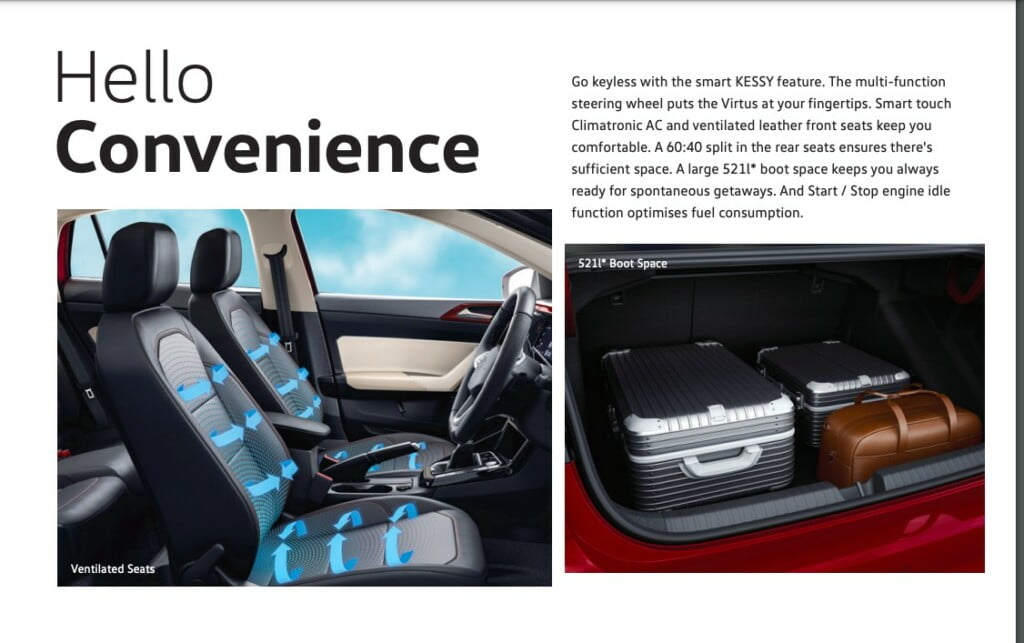
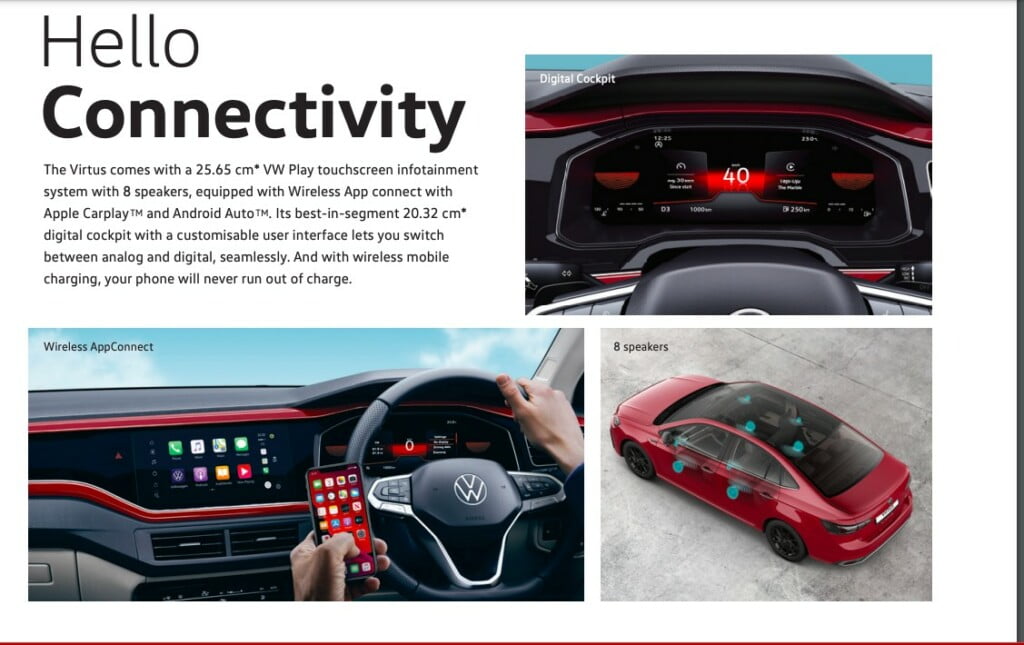
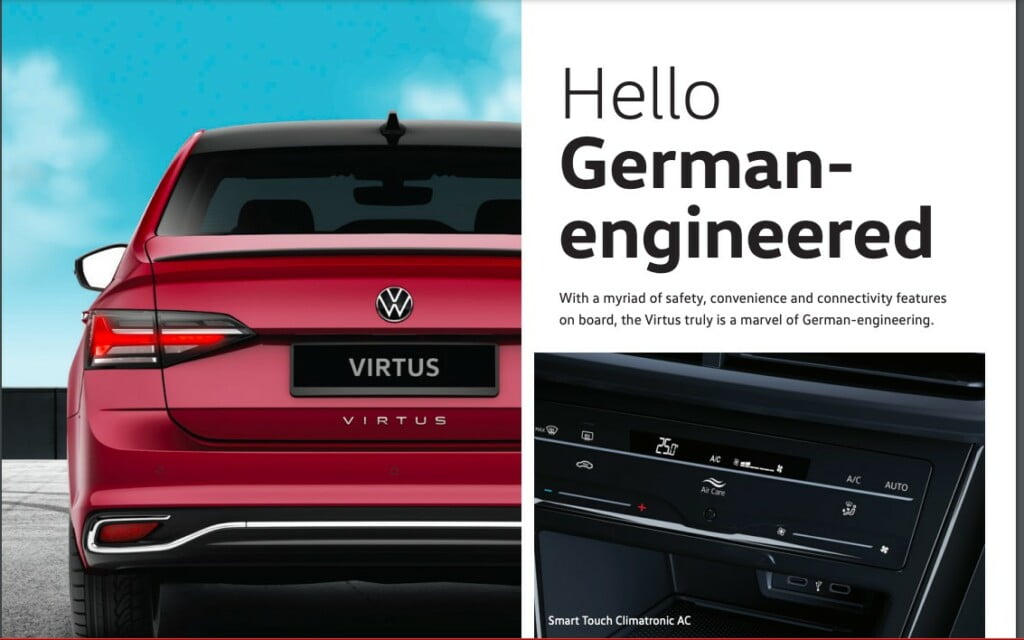
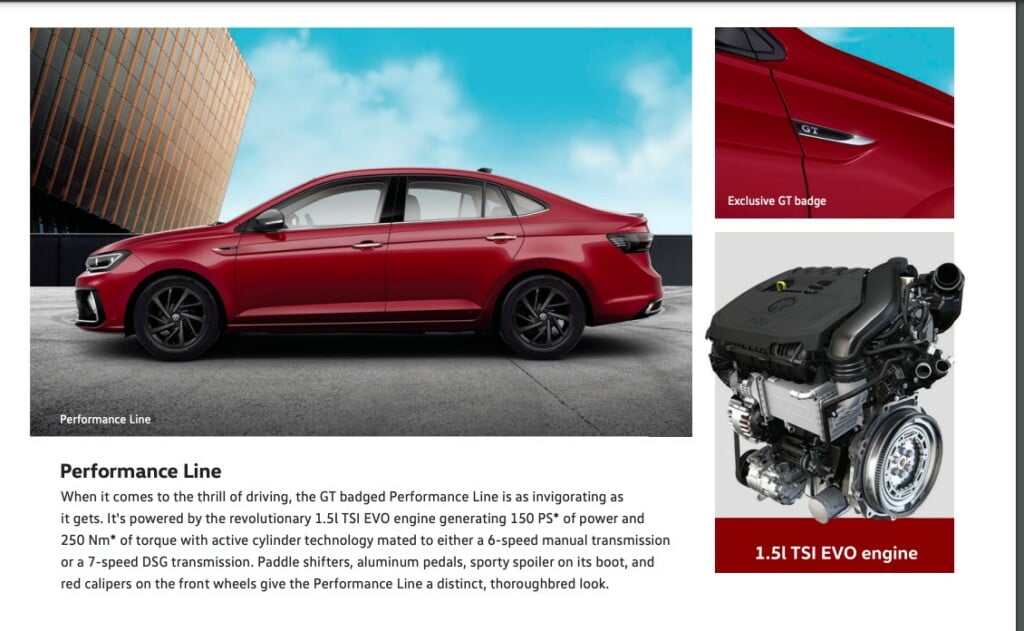
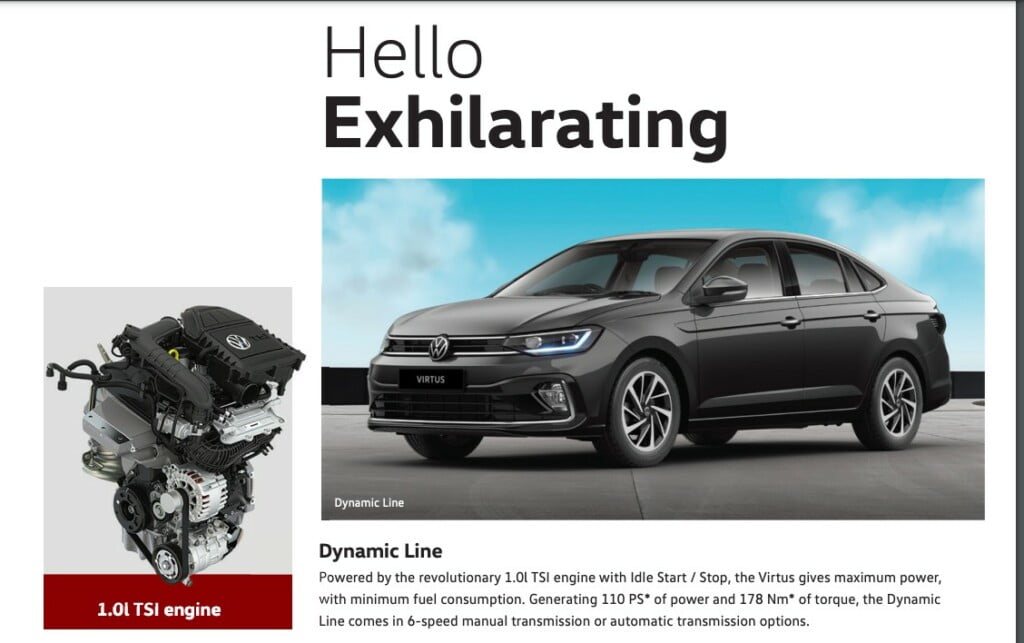
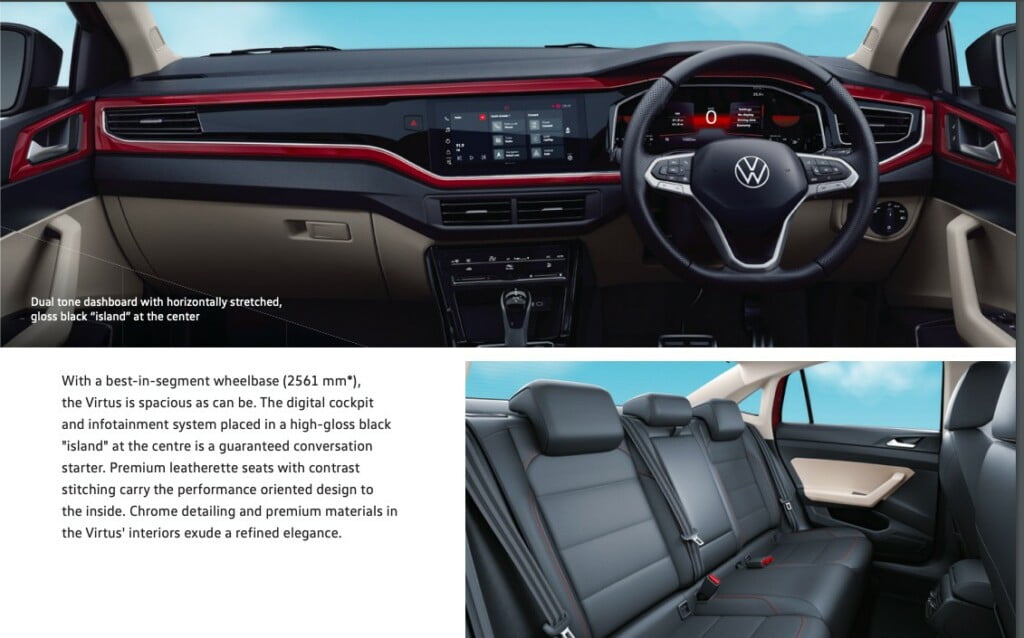
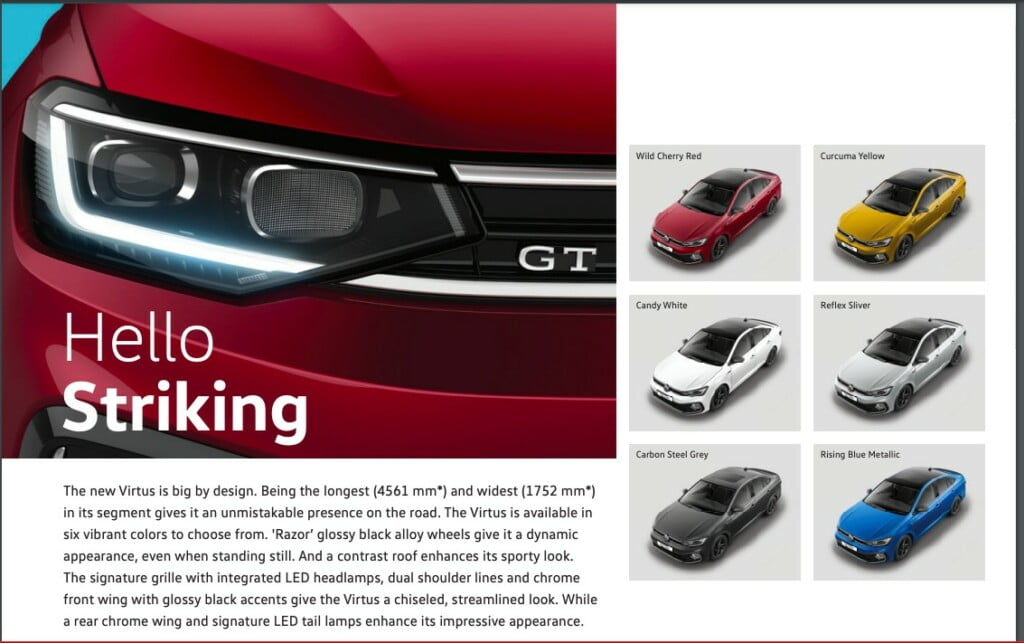

Brochure Images
You may also read: WATCH Skoda Kushaq vs VW Taigun in Classic Drag Race
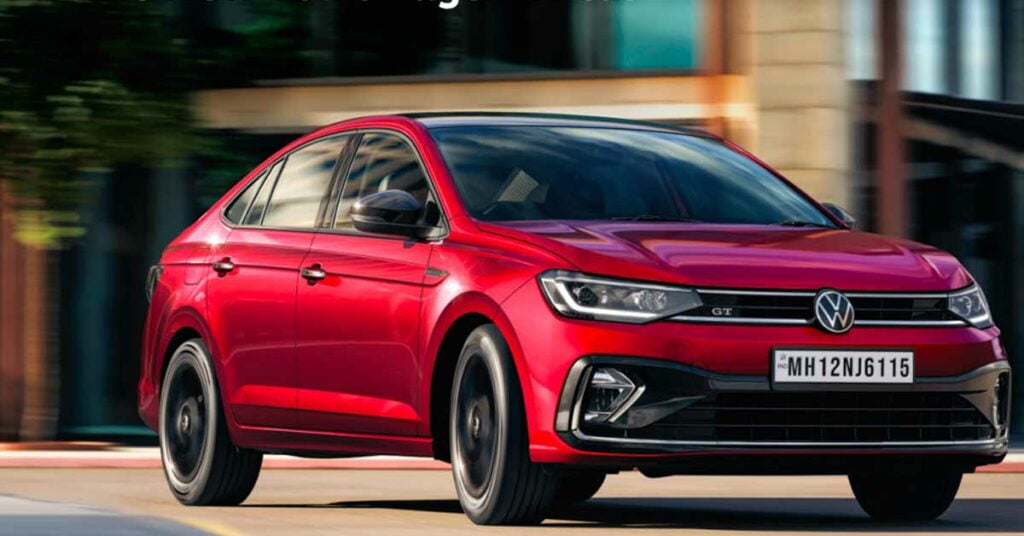
While the new Virtus 2018 will be underpinned by a modern platform, the engines are likely to be picked from VW’s current crop of engines. The 1.2 TSI and the 1.5 TDI will come from the Vento. The 1.4 TSI will come from the Jetta sedan. While it won’t be the first time VW India will put these engines to use, all the three motors we have here are considerably modern units with a high performance and efficiency. Transmission options should include a 6-speed Manual and a 7-speed DSG Automatic. Watch this space for more information on the specs of the Vento-replacement.


